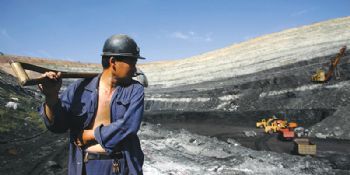
China has announced that it will cut 500,000 jobs in the steel and coal industries this year (after cutting 726,000 in 2016).
At a press conference in Beijing, Yin Weimin — the Minister of Human Resources — said that the laid-off workers will enter a job-placement programme or be offered early retirement.
A government spokesman said: “Beijing wants to re-orient the economy away from relying on debt-fuelled investment and towards a consumer-driven model, while trimming the industrial sector.”
Despite the large numbers of lay-offs cited by the government, analysts say it is unclear how deep the cuts really go.
“Chinese firms appear reluctant to shutter idle coal mines and steel mills and write them off,” analysts at Capital Economics wrote in a report published earlier this month.
“China is still a long way from resolving its surplus capacity woes,” wrote Chang Liu and Julian Evans-Pritchard.
“Policy makers continue to drag their feet on reform, due to fears that deep capacity cuts would cause a rise in lay-offs and an immediate economic downturn.”
Meanwhile, the US president told Congress earlier this month that he has drawn up plans to help American coal and steel workers.
“Dying industries will come roaring back to life,” he declared. Donald Trump said he will introduce a directive that new pipelines must be made with American steel — and he will remove a number of regulations that “threaten the future and livelihoods of our great coal miners”.